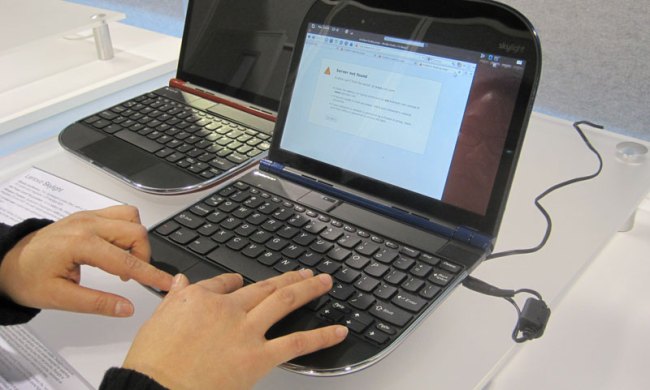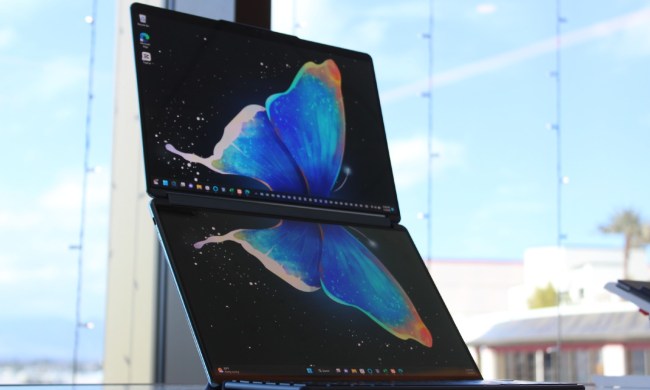
Perhaps you remember the Palm Foleo.
Back when netbooks were still running around in diapers, Palm announced the so-called “subnotebook” to bridge the gap between smartphones and full-powered laptops: large enough to comfortably type, surf and e-mail from, but small enough to carry everywhere. Despite the geek love for the concept, Palm axed it less than a year later to focus on the then-unknown Pre.

Hands on, the Skylight feels every bit as sturdy as its full-length hinge and metal-rimmed chassis would suggest. At 10 inches across, the screen might be mistaken for a netbook’s, and the keyboard as well, but fire it up and you’ll revisit the era of those 2007 netbooks. To make the most of the 1GHz Snapdragon processor within, Lenovo has it running on a custom Linux build that uses “widgets” in place of applications. Although it feels responsive enough, you’ll find just 18 total apps. (A software developer’s kit in the pipeline should open this up to more if the platform ever catches on.)

Priced at $500 without wireless contracts, the Skylight may have a tough time competing with netbooks, but its sleek build, thin chassis, light weight and extended battery life (Lenovo claims 10 hours) will all give it a leg up for true road warriors.



